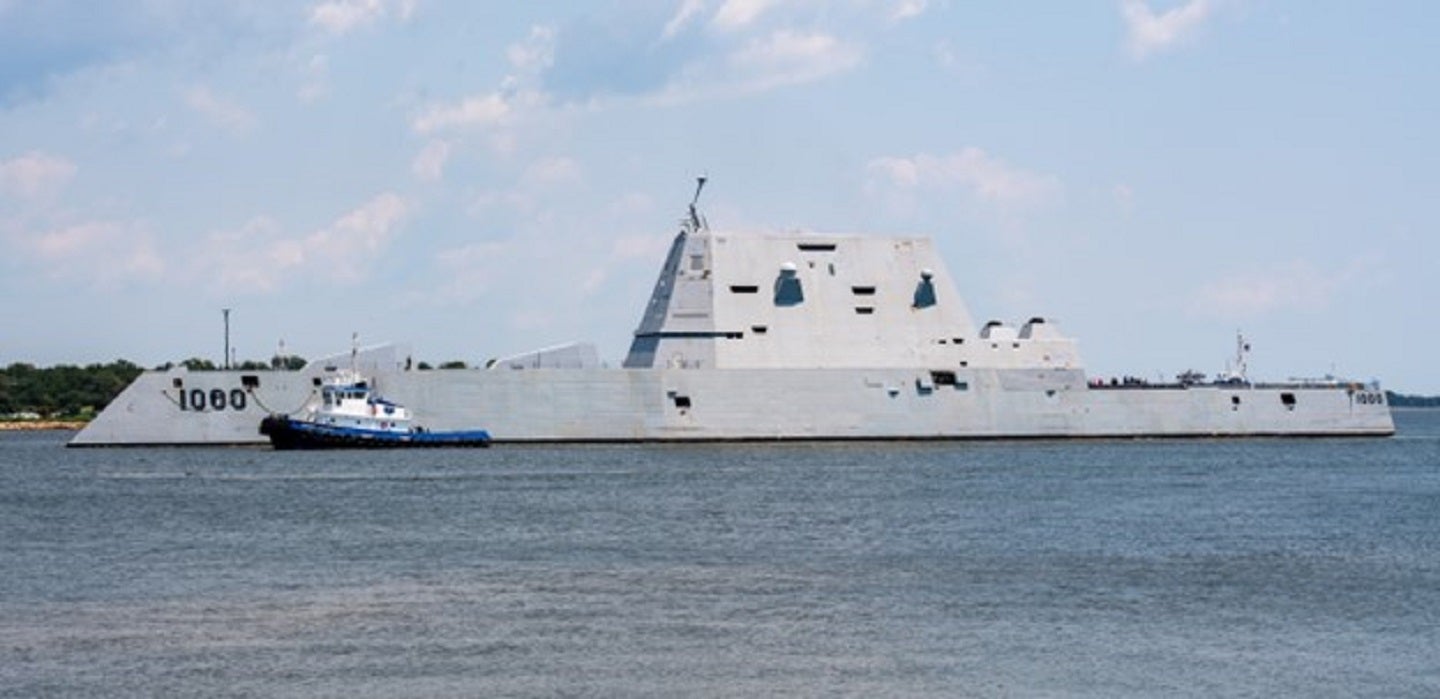
HII’s Ingalls Shipbuilding division will integrate the Conventional Prompt Strike (CPS) system – a hypersonic missile structure – onboard the USS Zumwalt (DDG 1000).
The vessel arrived in Pascagoula, Mississippi on 19 August from San Diego, where the contractor will replace the current 155mm twin gun system with the CPS weapon system.
According to Office of the Director for Operational Test and Evaluation (ODOTE), the CPS is a conventional, boost-glide hypersonic weapon system. The all-up-round missile includes a two-stage solid rocket motor booster and a Common Hypersonic Glide Body containing a kinetic energy projectile warhead.
US commanders will launch CPS from Zumwalt-class destroyers and Virginia-class submarines to penetrate air defences and to strike high-value, time-sensitive targets within a period of 1-24 hours.
Moreover, the Navy will fit the CPS systems onboard the DDG 1000 Zumwalt. The Navy built its first Zumwalt destroyer under the US Department of Defense’s (DoD) DD(X) programme. HII delivered the vessel to the US Navy in May 2016 and then the Navy commissioned the DDG 1000 for service in October that year.
GlobalData Defence analyst James Marques explained that “Zumwalts are ‘stealth’ ships, so they give an added theoretical benefit of being unable to anticipate where a shot is coming from on long range radar.”
In January 2023, the Navy awarded Ingalls a $10.5m contract for the modernisation period planning of USS Zumwalt (DDG 1000) and USS Michael Monsoor (DDG 1001).
USS Michael Monsoor will also receive the CPS install at Ingalls during a future modernisation period.
Additionally, Lyndon B. Johnson (DDG 1002) arrived at Ingalls in January 2022 and is undergoing a combat systems activation.
Integrating the CPS onboard the Zumwalt
It is curious that the US Navy has decided to field the CPS at such an early stage of development in hypersonic technologies.
When asked about the maturation of hypersonic missiles, HII and Naval Sea Systems Command did not provide a comment.
However, the ODOTE tells us that the installation of the CPS is part of a Middle Tier of Acquisition in the Navy’s second phase of CPS development. This is a pathway used to rapidly develop fieldable prototypes within an acquisition programme.
GlobalData Defence analyst Tristan Sauer suggested: “This capability is far from popular due to how expensive, novel and unproven hypersonics remain.
“The US military’s decision to integrate the CPS with Zumwalt DDGs is actually a significant step in the fielding of novel hypersonic designs, though with only $1.1bn this is very much still a ‘trial’ to see how well this system holds up on extended deployments before they decide to ramp up production and orders.”
According to ODOTE, “the Navy has yet to identify test conditions and associated test resources that will be evaluated across the three CPS phases to adequately assess lethality and operational effectiveness in the threat-contested environment.”
Although, in the last five years HII has invested nearly $1bn in the infrastructure, facility and toolsets at Ingalls, enabling their people, improving product flow and process efficiency, and enhancing product quality.
As a long-standing partner in the construction and system activation of navy destroyers, Ingalls is able to leverage their 85-year shipbuilding legacy and modernised facilities to support future generation systems and platforms.



